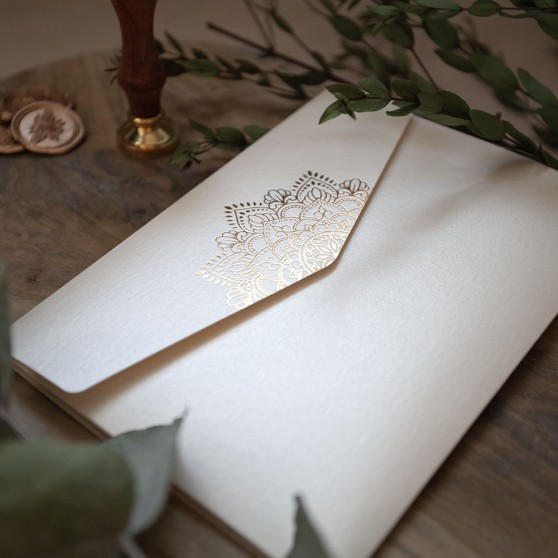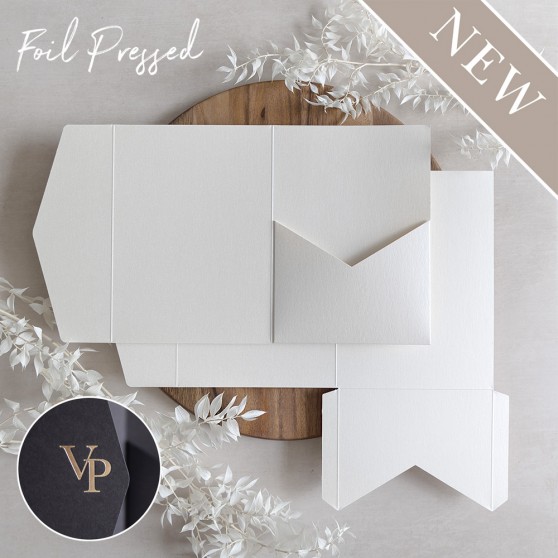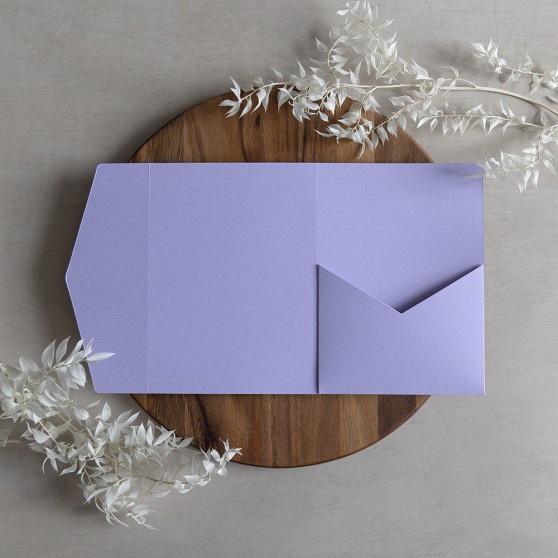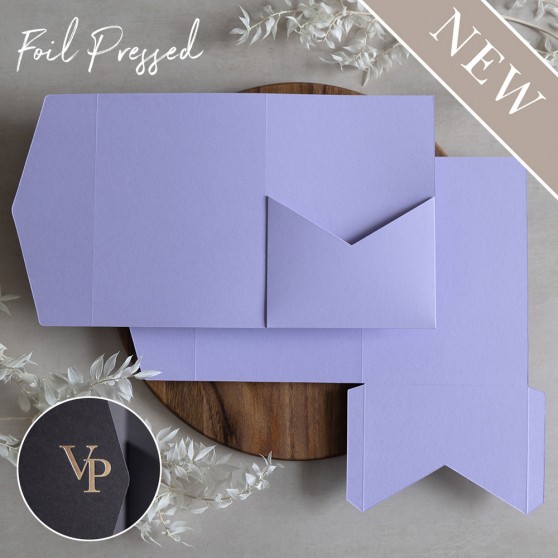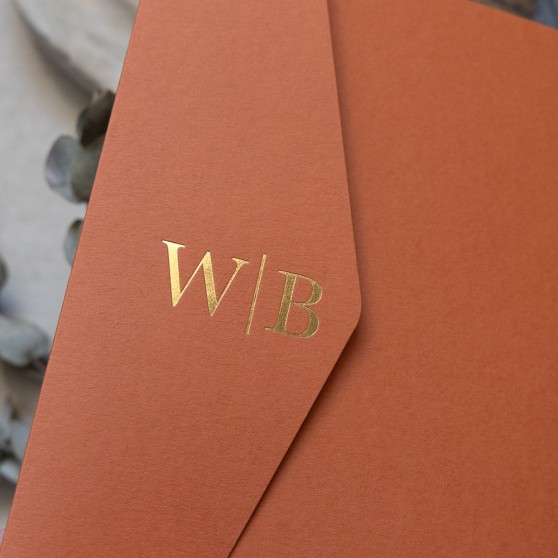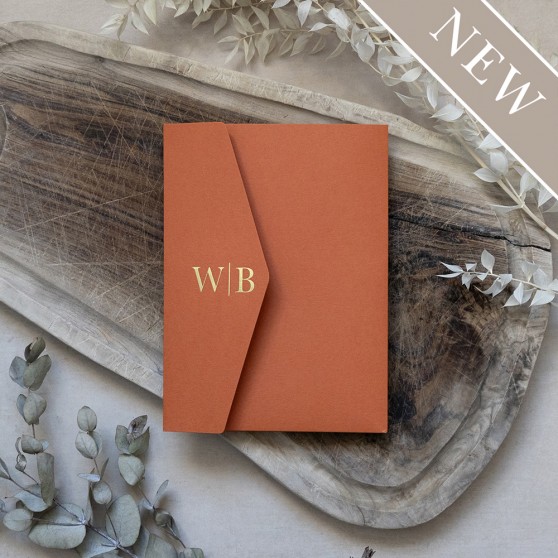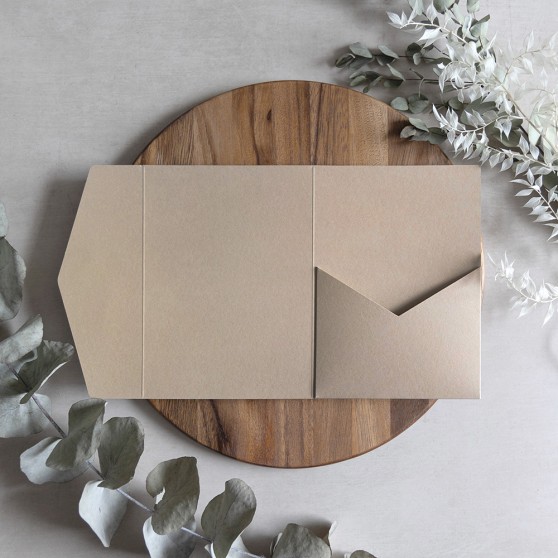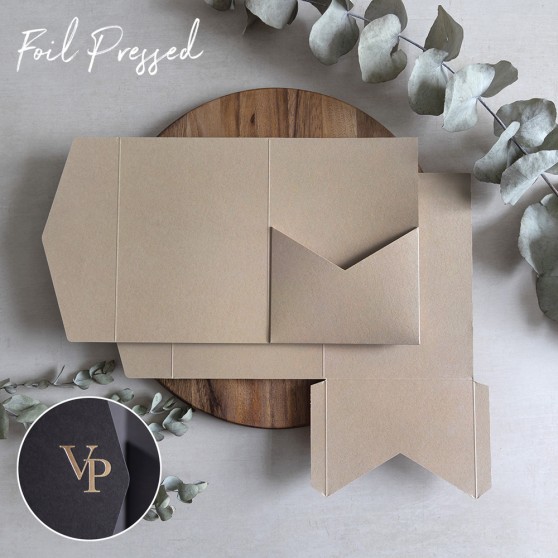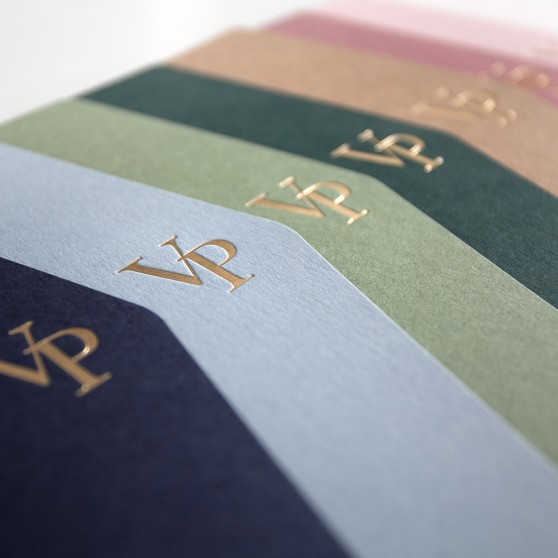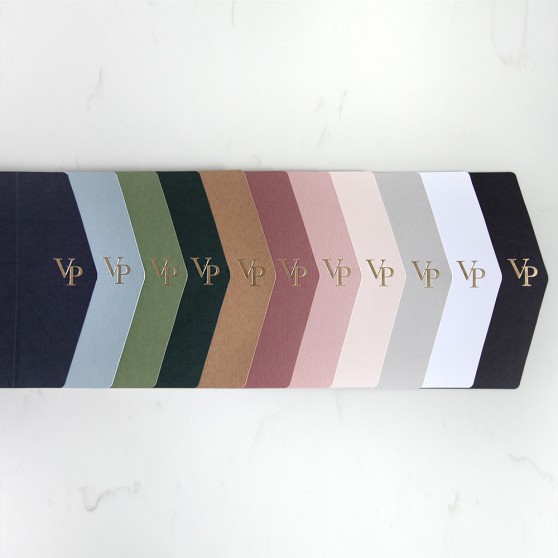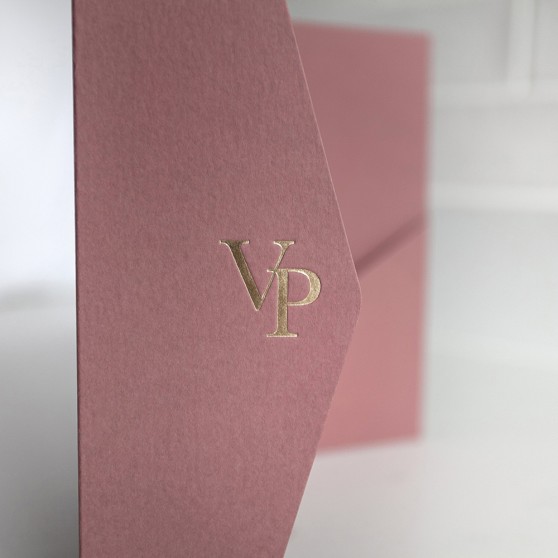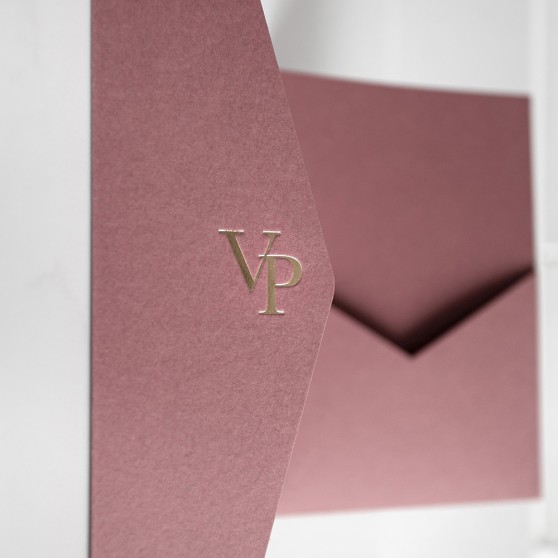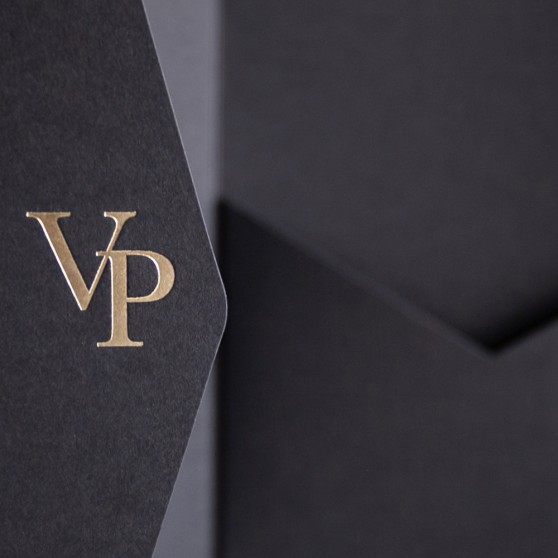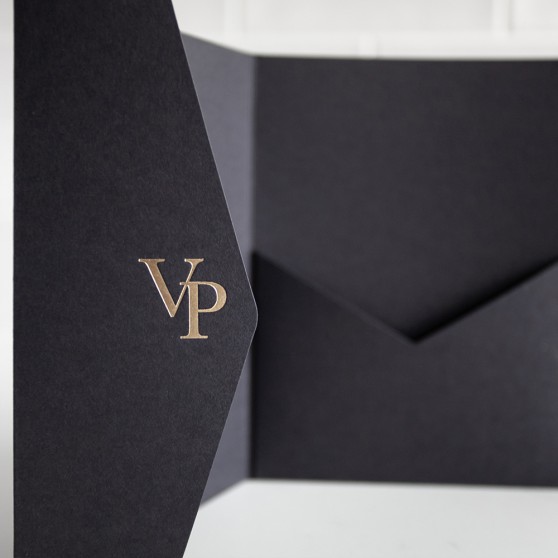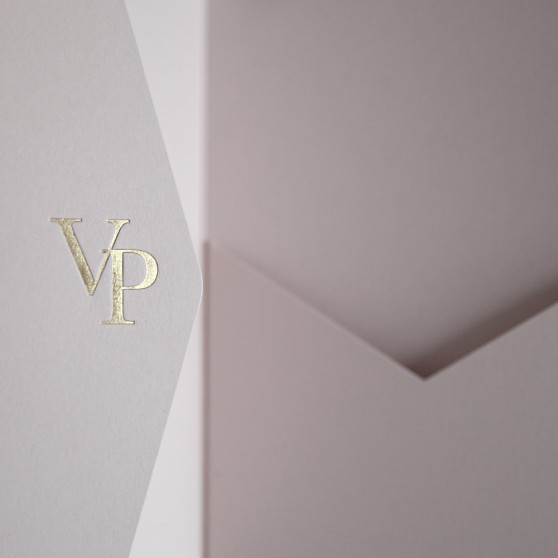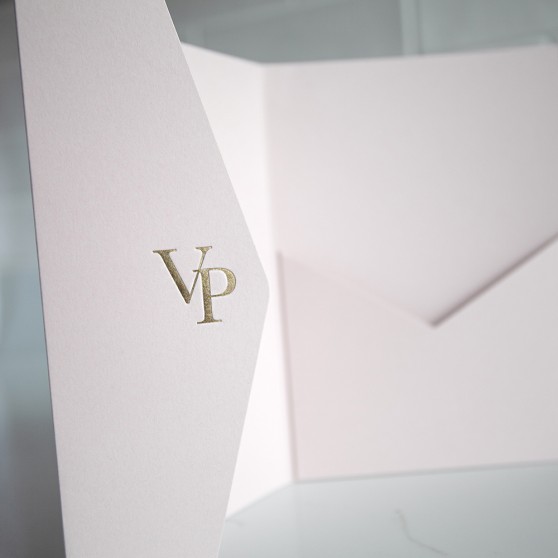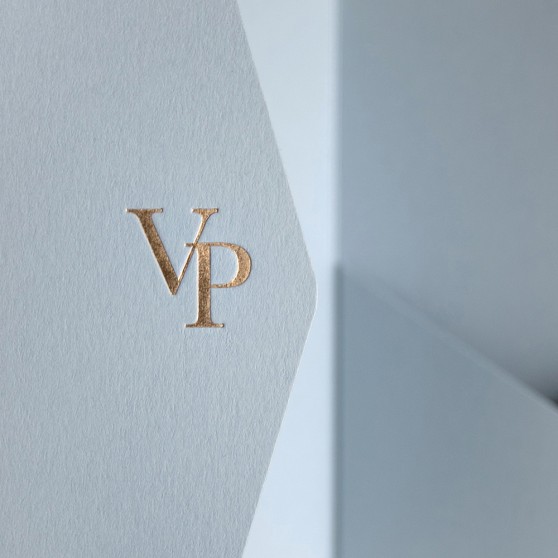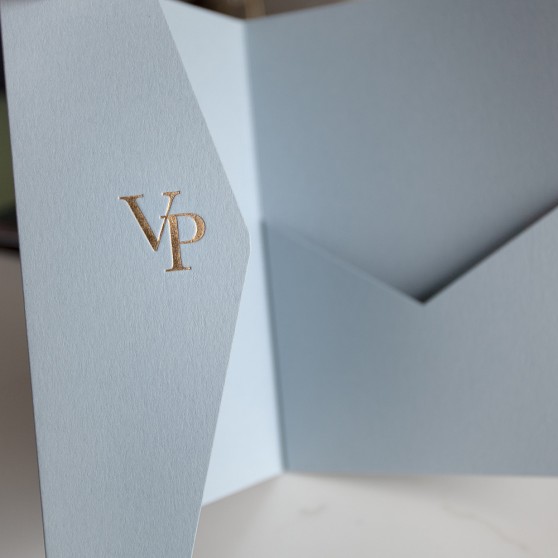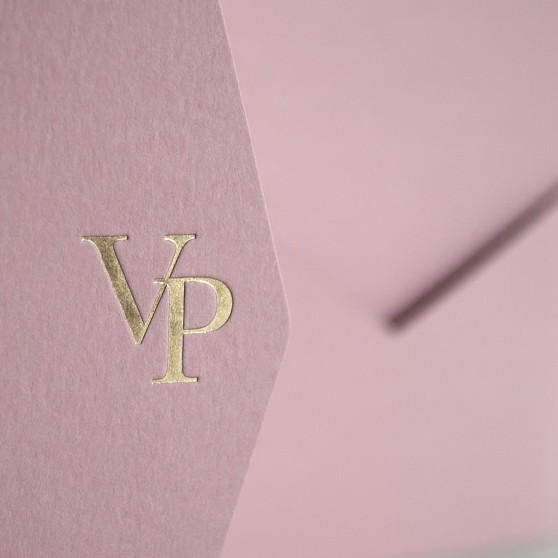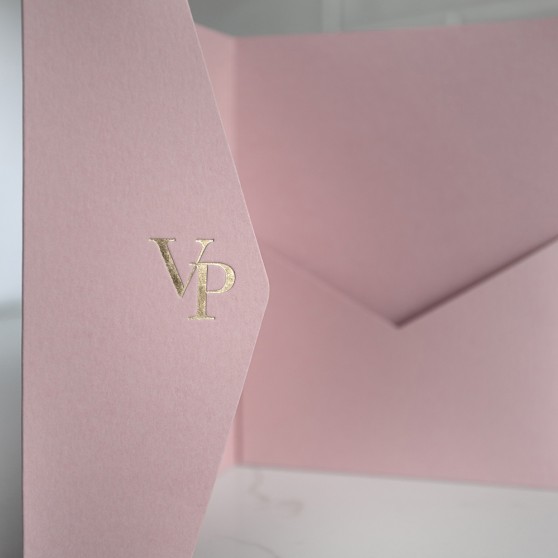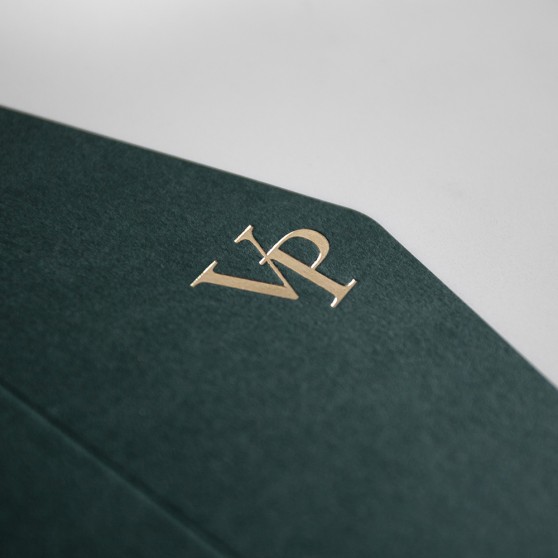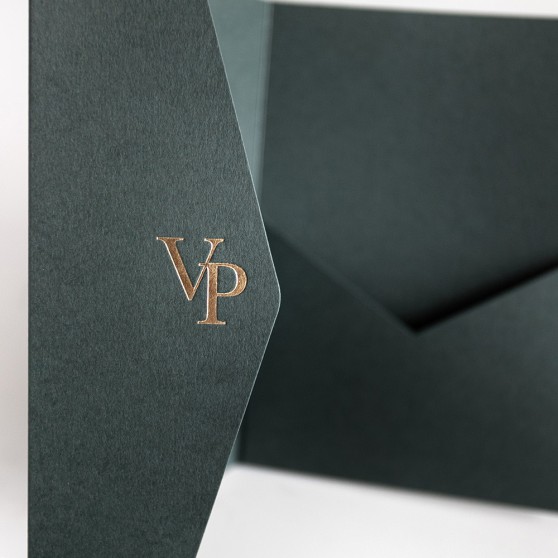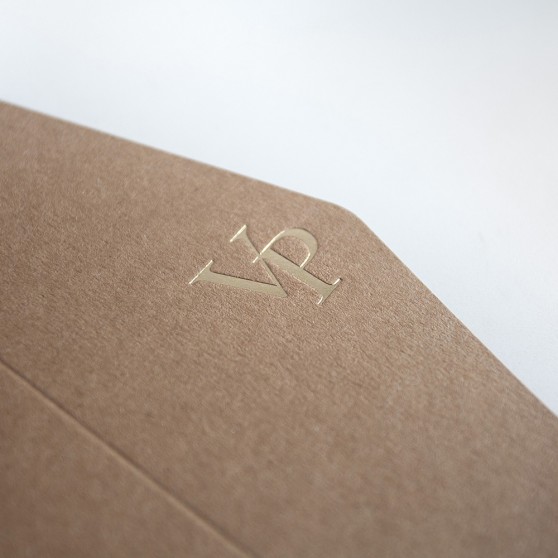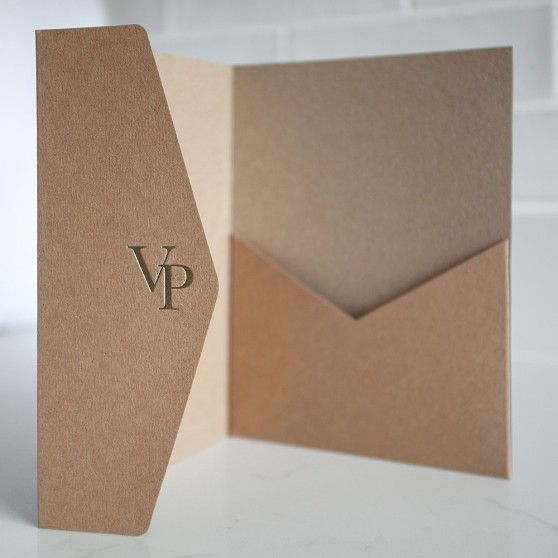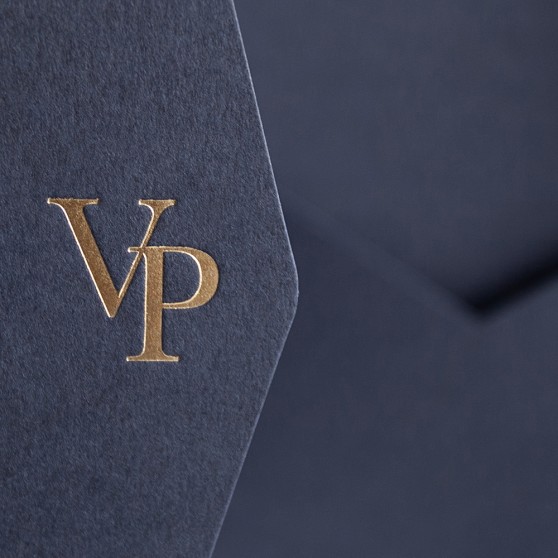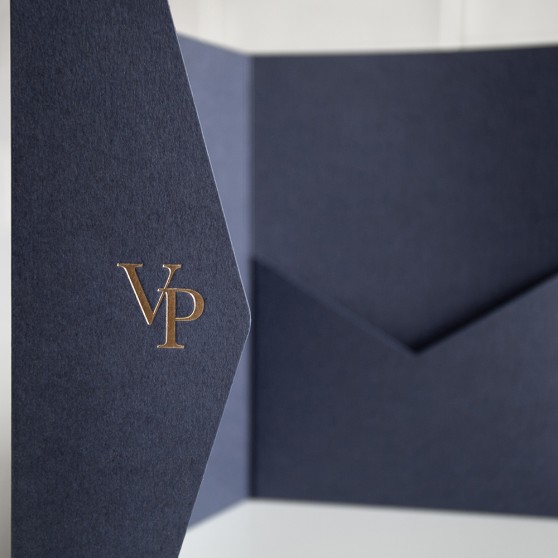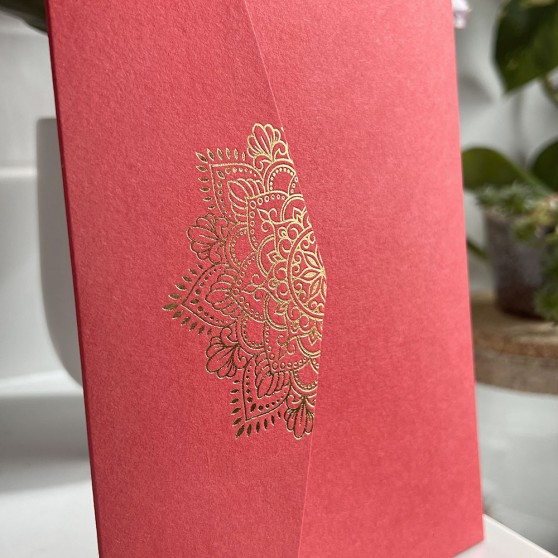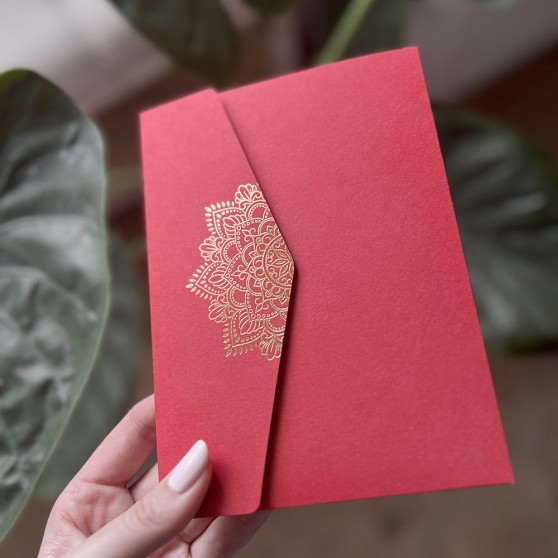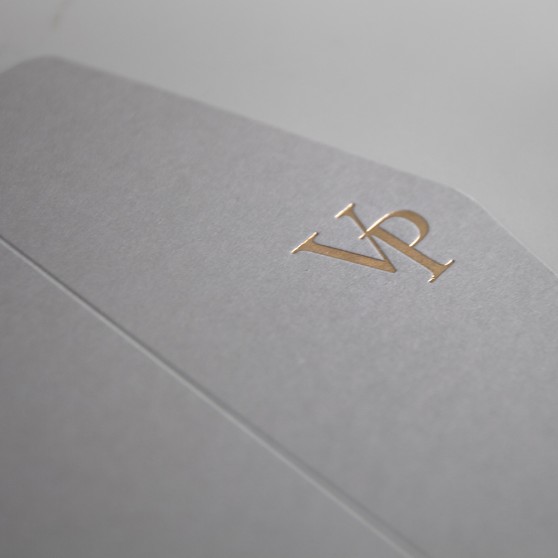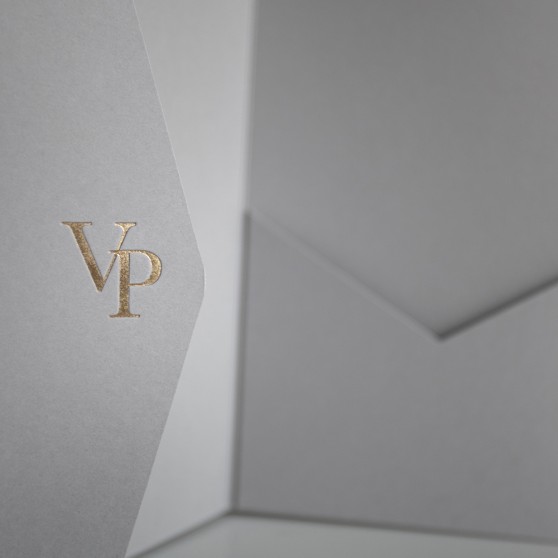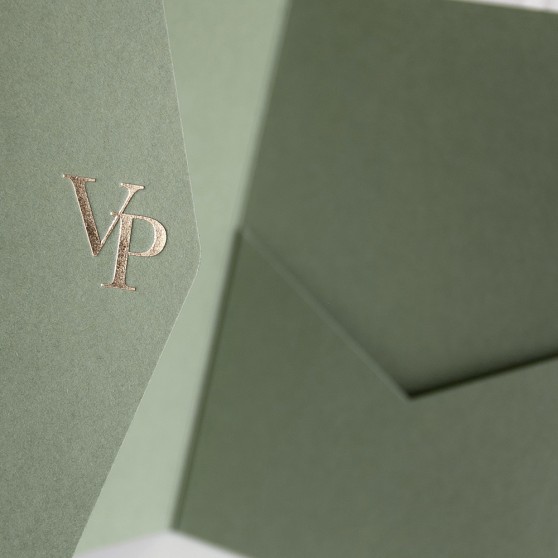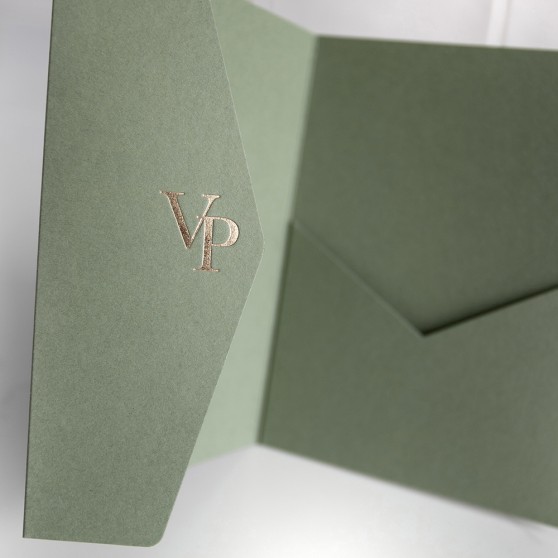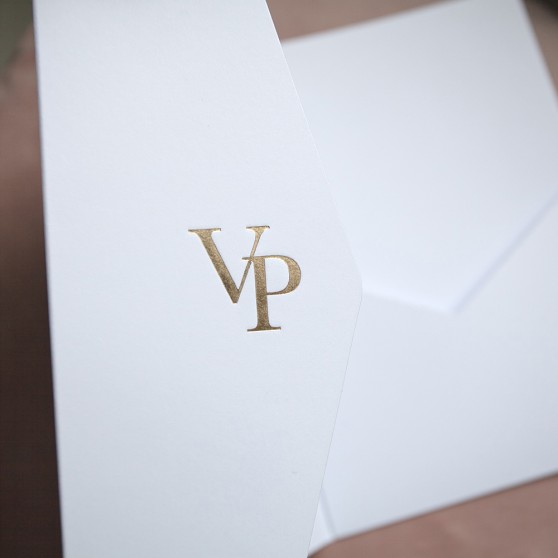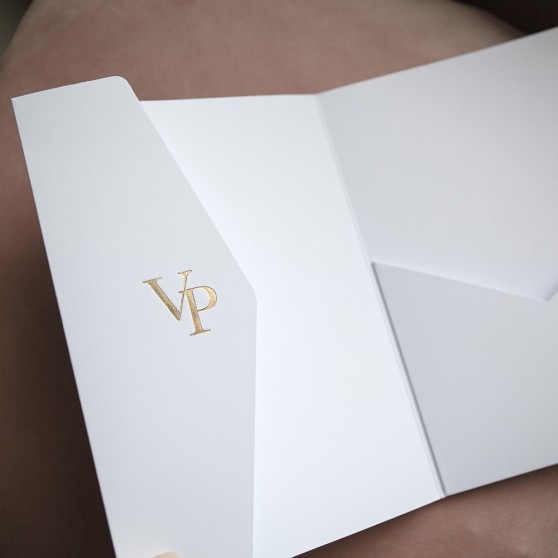What is Block Foiling / Hot Foiling?
Foil Blocking, Hot Foiling, or Hot Foil Stamping are all the same thing, a traditional, beautifully tactile printing method used to provide stunning foil stationery. Not to be confused with the more affordable digital foiling, this traditional foiling is all done by hand to create a unique finish. It requires specialist printing equipment and a lot of time and patience as cards are printed one at a time. It was a popular method used in the 19th century for applying embossing and gold tooling to books. It provides consistent, high-quality results.
Like with letterpress, a custom metal block or die with a reverse image is created and used to imprint letters or a design onto paper or card. Instead of using ink, a thin foil film is positioned between the die and the card. Heat activates the glue on the back of the foil and pressure pushes the foil into the card forming a bond. This provides a beautiful, de-bossed, shiny metallic imprint. Because foil is shiny and opaque, it can be printed on dark papers with no show through. The contrasting card texture, imprint, and shiny foiling bring your stationery to life. It works best when avoiding large areas of colour or delicate lines.
How do you actually create Hot Foil Stationery?
We use a metal die or block with a reverse image on it. This is attached to the heated platen of our traditional printing press and pressed through a foil film onto the card. The foil is then transferred onto the card where it bonds and creates the beautiful indented (slightly debossed) finished design. Each card has to be carefully aligned and everything is created with precision and care.
What are the Advantages of Traditional Block Foiling?
It is undeniably one of the most luxurious and beautiful forms of printing that is worth the higher price tag. It is more suited to large print runs as the original cost of the blocks can be distributed over the number of items ordered. The variety of types, colours, and thickness of card that can be used is vast. It looks beautiful on light and dark backgrounds alike.
What are the Disadvantages of Traditional Block Foiling?
It’s a very labour-intensive form of foiling. That and the cost of creating a custom metal printing die for each print job means that it is one of the most expensive forms of printing. Pairing generic designs with digital printing can make it more affordable but limits the type of card that can be used.
Once the block has been created, it can’t be edited. So, it is essential to get it right from the start.
Can I Order a Sample?
Yes, we have standard samples available. Click the link on the listing or ask us for details. Samples are not customised.
Can You Do Custom Designs?
Yes, if you have a monogram, logo, or other small image you’d like to have pressed into your pocketfolds, please just get in touch and we’ll be happy to advise you.
Can You Print Additional Pocketfolds Later?
Yes, once a block or die has been made, it can usually be used again. Please contact us if you’d like to have reprints made.
Is Block Foiling the Same as Embossing?
No, although it is a very similar process and does produce an imprint in the card, embossing pushes the text or image into the card leaving a very clear imprint without using any ink or foil. Two custom plates are created for each design.
What is Letterpress?
Letterpress uses ink rather than foil. A custom metal die is created and then used to press an ink image onto card. The finish isn’t always as smooth and can vary in shade but this adds to the beauty of it. Often individual metal letters are used in a template. It’s incredibly time consuming to set up but is a beautiful, traditional artform.
What is Digital Foiling?
With digital foiling, an image or text is printed using pure black toner. It is then run through a foiler and the foil adheres to the black toner. The finish is flat and sits on the surface of the card or paper.
What are the Advantages of Digital Foiling?
Digital foiling is a relatively inexpensive and therefore the most economical form of foiling. It’s faster to produce than traditional foiling. It allows for more versatile designs and also for variable printing such as having personalised guest names on invitations. It doesn’t require a customised block or stamping die. At Vintage Prints it is available on smooth white or cream card. Foil colours available are gold, silver, and rose gold. You get a flat metallic printing effect but without the additional cost.
What are the Disadvantages of Digital Foiling?
The finish is not as sharp on any cardstock that is even slightly textured and can be bitty. This is why we only offer this option on smooth card where a great quality finish is achieved. It’s a flat finish without any indentation on the card as no die is used. Cardstock variety is limited due to the limitations of digital foiling. Only an exceptionally smooth card works and it’s best to avoid very small or fine-detailed fonts.
To sum up
If you are very particular and want the glamour and elegance but your budget doesn’t allow for hot foiling, digital foiling is a great cost-effective alternative.

